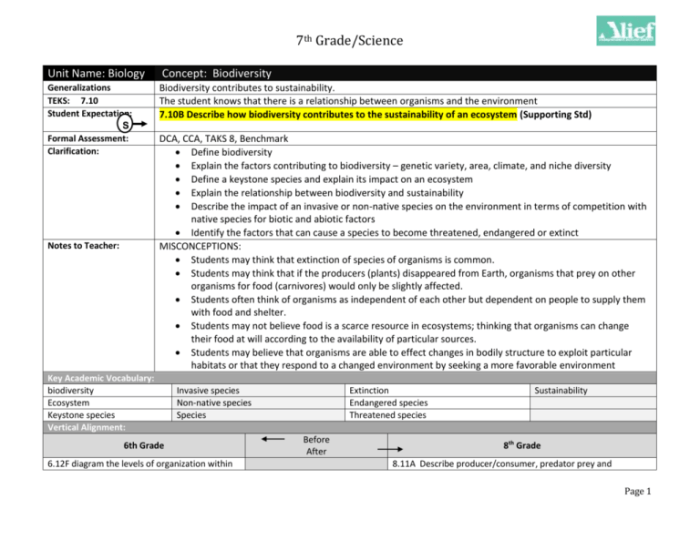Introducing the relationships and biodiversity lab answer key PDF, an invaluable resource for understanding the intricate interplay between species and their environments. This comprehensive guide unlocks the secrets of biodiversity, providing a wealth of knowledge for students, researchers, and anyone fascinated by the natural world.
Within this meticulously crafted document, you’ll delve into the significance of biodiversity, exploring its crucial role in maintaining ecosystem balance. Discover the fascinating array of symbiotic relationships that shape nature, and learn how to design and conduct biodiversity lab experiments with precision.
Relationships and Biodiversity Lab: Relationships And Biodiversity Lab Answer Key Pdf

Biodiversity refers to the variety of life on Earth, including the different species of plants, animals, and microorganisms. It plays a crucial role in the functioning of ecosystems, providing essential services such as nutrient cycling, pollination, and water purification. Understanding the relationships between species and their impact on biodiversity is fundamental to maintaining healthy and resilient ecosystems.
Symbiotic Relationships
- Mutualism:Both species benefit from the interaction, such as the relationship between plants and pollinators.
- Commensalism:One species benefits while the other is unaffected, such as the relationship between barnacles and whales.
- Parasitism:One species (parasite) benefits at the expense of the other (host), such as the relationship between fleas and dogs.
Biodiversity and Ecosystem Balance
Biodiversity contributes to ecosystem stability by:
- Providing a wider range of food sources, reducing competition and the risk of species extinction.
- Enhancing ecosystem resilience to disturbances, such as climate change or pollution.
- Supporting complex food webs, ensuring a stable flow of energy and nutrients through the ecosystem.
Biodiversity Lab Experiment Design

Steps in Designing a Biodiversity Lab Experiment
- Define the research question and hypothesis.
- Select appropriate study site and sampling methods.
- Establish control groups to compare experimental results.
- Control variables that may influence the results, such as temperature, light, or pH.
- Collect and analyze data using appropriate statistical methods.
Importance of Control Groups
Control groups provide a baseline for comparison, allowing researchers to determine whether observed differences in biodiversity are due to the experimental treatment or other factors. They help eliminate bias and ensure the validity of the results.
Controlled Variables
- Environmental factors (e.g., temperature, light, moisture)
- Experimental treatments (e.g., fertilizer application, pollution exposure)
- Sampling methods (e.g., quadrats, transects)
Biodiversity Data Analysis

Methods for Analyzing Biodiversity Data, Relationships and biodiversity lab answer key pdf
- Species richness:The number of different species present in a sample.
- Species abundance:The number of individuals of each species in a sample.
- Species diversity:A measure that combines species richness and abundance, such as the Shannon index.
Statistical Tests for Biodiversity Data
- T-test:Compares the means of two independent samples.
- ANOVA:Compares the means of multiple independent samples.
- Non-parametric tests:Used when data does not meet the assumptions of parametric tests.
Challenges in Interpreting Biodiversity Data
Interpreting biodiversity data can be challenging due to factors such as:
- Sampling error: The difference between the observed biodiversity and the true biodiversity in the population.
- Environmental variability: Natural fluctuations in environmental conditions can influence biodiversity.
- Species interactions: Complex relationships between species can affect the overall biodiversity of an ecosystem.
Biodiversity Lab Report Writing

Structure of a Biodiversity Lab Report
- Introduction:State the research question, hypothesis, and background information.
- Methods:Describe the experimental design, sampling methods, and data analysis techniques.
- Results:Present the data and statistical results in tables and graphs.
- Discussion:Interpret the results, discuss their implications, and compare them to existing research.
- Conclusion:Summarize the findings and state any limitations or future research directions.
Importance of Tables and Graphs
Tables and graphs are essential for presenting biodiversity data clearly and concisely. They allow readers to quickly grasp the patterns and relationships in the data.
Ethical Considerations
- Minimize disturbance to the study site and its inhabitants.
- Obtain necessary permits and follow ethical guidelines.
- Report findings accurately and objectively.
General Inquiries
What is the purpose of the relationships and biodiversity lab answer key PDF?
The relationships and biodiversity lab answer key PDF provides comprehensive guidance for understanding biodiversity, designing lab experiments, analyzing data, and writing effective lab reports.
How can I access the relationships and biodiversity lab answer key PDF?
The relationships and biodiversity lab answer key PDF can be accessed through authorized educational platforms or by contacting the publisher.
What are the key concepts covered in the relationships and biodiversity lab answer key PDF?
The relationships and biodiversity lab answer key PDF covers essential concepts such as the significance of biodiversity, symbiotic relationships, biodiversity lab experiment design, data analysis, and lab report writing.
